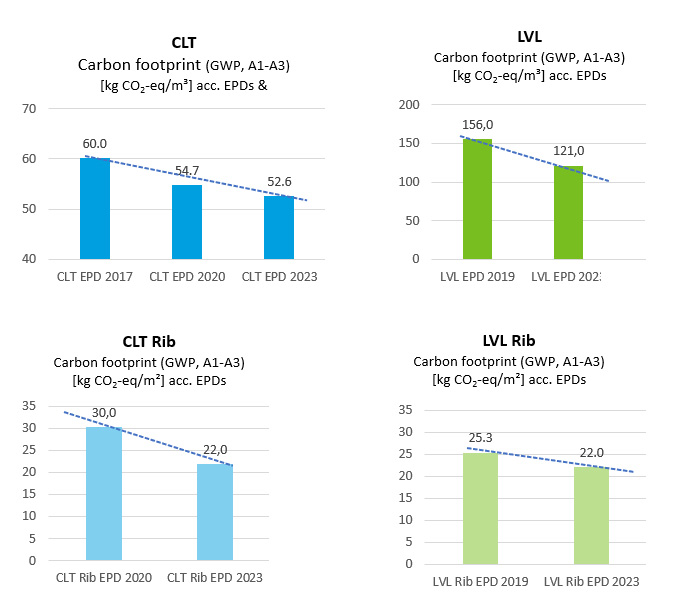EPDs, what exactly are they?
EPDs provide unbiased product information based on objective scientific analysis you can trust. They include details on products’ environmental impacts, use of resources and waste production during their life cycle. The information is transparent, based on a standardised methodology and verified by an independent third party.
EPDs are based on life cycle assessments (LCAs), and the information is presented by the product’s life cycle stages, as demonstrated in the illustration below. The stages (e.g. Product stage) and modules (e.g. A1 Raw material, A2 Transport and A3 Manufacturing) follow the European standard EN 15804 for construction products.
All of Stora Enso’s EPDs for wood products are available in our Download Centre and at the International EPD system.
How to interpret EPDs
To make it easier for stakeholders to use our EPDs, we created a short guide to interpreting EPDs. The guide explains how our products’ carbon footprint is measured, clarifies the terms used, and makes it easier for customers to find the information they are looking for.
What’s new in the updated EPDs
EPDs for the following products have now been updated:
EPDs for CLT and Sylva™ CLT Rib now include Ždírec Mill. The quality of results is improved, as the data received via internal reporting systems and from our mills are more detailed. This means for example a more precise consideration of heat and electricity mixes and more specific data from our suppliers. It is thanks to the increased environmental awareness that more and more of our suppliers are now starting to provide this more specific data which helps us reach more reliable and better results.
Why is this important?
Stakeholders involved in the conception and planning of buildings need internationally reliable and standardised product information to make informed decisions about a construction project’s overall carbon footprint. This latest update by Stora Enso confirms that our wood products have one of the lowest product carbon footprints on the market, making it easier for architects, designers, and developers to meet their sustainability goals by specifying wood products from Stora Enso.


